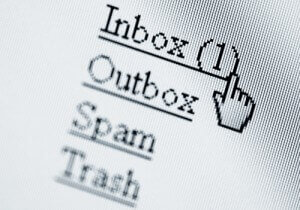- Products

Enjoy a free 30-day trial of our
data validation software.Experience the power of trusted data
solutions today, no credit card required! - Solutions

Enjoy a free 30-day trial of our
data validation software.Experience the power of trusted data
solutions today, no credit card required! - Partners

Enjoy a free 30-day trial of our
data validation software.Experience the power of trusted data
solutions today, no credit card required! - Learn more
- Pricing
- Contact Us
Real time email verification with minimal impact on UX

There’s value in cleansing your email database periodically or prior to a big marketing campaign. Email deliverability varies depending upon list hygiene. If you attempt to email an invalid or undeliverable email address, your coveted sender reputation may be negatively impacted; landing you in your contact’s spam folder or getting you blacklisted altogether.
With deeply integrated marketing automation platforms now commonplace amongst businesses of all sizes, email campaigns are frequently triggered immediately upon form completion, which poses an increased threat to your organization’s ability to deliver content effectively.
The chances of having deliverability issues go up with each bad email address you send to. This is because high bounce rates, spam traps and user inactivity negatively affect your sender reputation.
Let’s think about a user engaging with your site and looking to download a white paper. When they download the resource, you may want to send a tailored auto-responder email based on their unique digital behavior. But what if this visitor enters a syntactically valid, but undeliverable address? Perhaps they use an email they no longer monitor; not because they never intend to reengage with you, but simply because they want to interact on their own terms without receiving regular email communication. Your marketing automation platform is going to churn out its tailored auto-responder and hit you where it hurts – right in the sender reputation score. Ouch!
The solution is a combination of well-designed syntactical validation on the front-end (replicated on the server in case JavaScript is disabled), coupled with a robust, real-time verification engine that runs behind the scenes. The former is best practice amongst developers, but the latter is more likely to be solved with the help of a third-party vendor like Experian Data Quality.
While a real-time solution is beneficial, you must implement it properly to meet your business needs. This is especially true in a B2B environment where your visitors are providing email addresses with unique domains (i.e. fewer Gmail addresses, more Acmes). Larger consumer-oriented domains (e.g. Hotmail, Yahoo, and Gmail) will return a response more quickly.
Depending upon the type of email addresses collected, the validation request may “time out”, meaning you close the connection with the mail server before receiving a valid response. The result will be an email address classified as “unknown.” If more time is allowed, you stand a better chance of determining if the email is actually verified or undeliverable rather than a fruitless “unknown.”
This presents some UX concerns. You can’t let your visitor sit there for 15 seconds while their obscure email address is being verified. Depending upon the workflow, even a 3-5 second timeout may be too long.
One solution is to allow your users to submit the syntactically valid email address and let them proceed without interruption. Meanwhile, behind the scenes and prior to generating a triggered email response, you run the email verification product on the back-end for a statistically optimal period of time. Then, only upon successful verification do you trigger your campaign. The user is happy and your sender reputation remains intact.
Email remains the most popular way to communicate and engage with consumers. Therefore, it is vital that this piece of data be collected accurately so your company can market and remarket effectively. Just make sure you consider UX when doing so.


